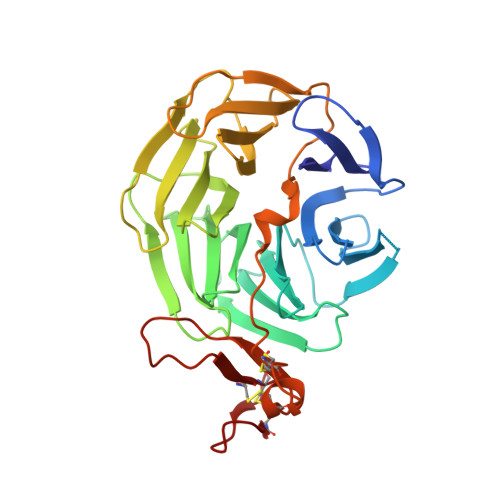Implications for familial hypercholesterolemia from the structure of the LDL receptor YWTD-EGF domain pair.
Jeon, H., Meng, W., Takagi, J., Eck, M.J., Springer, T.A., Blacklow, S.C.(2001) Nat Struct Biol 8: 499-504
- PubMed: 11373616
- DOI: https://doi.org/10.1038/88556
- Primary Citation of Related Structures:
1IJQ - PubMed Abstract:
The low-density lipoprotein receptor (LDLR) is the primary mechanism for uptake of cholesterol-carrying particles into cells. The region of the LDLR implicated in receptor recycling and lipoprotein release at low pH contains a pair of calcium-binding EGF-like modules, followed by a series of six YWTD repeats and a third EGF-like module. The crystal structure at 1.5 A resolution of a receptor fragment spanning the YWTD repeats and its two flanking EGF modules reveals that the YWTD repeats form a six-bladed beta-propeller that packs tightly against the C-terminal EGF module, whereas the EGF module that precedes the propeller is disordered in the crystal. Numerous point mutations of the LDLR that result in the genetic disease familial hypercholesterolemia (FH) alter side chains that form conserved packing and hydrogen bonding interactions in the interior and between propeller blades. A second subset of FH mutations are located at the interface between the propeller and the C-terminal EGF module, suggesting a structural requirement for maintaining the integrity of the interdomain interface.
- Brigham Women's Hospital and Harvard Medical School Department of Pathology, 75 Francis Street, Boston, Massachusetts 02115, USA.
Organizational Affiliation:
















